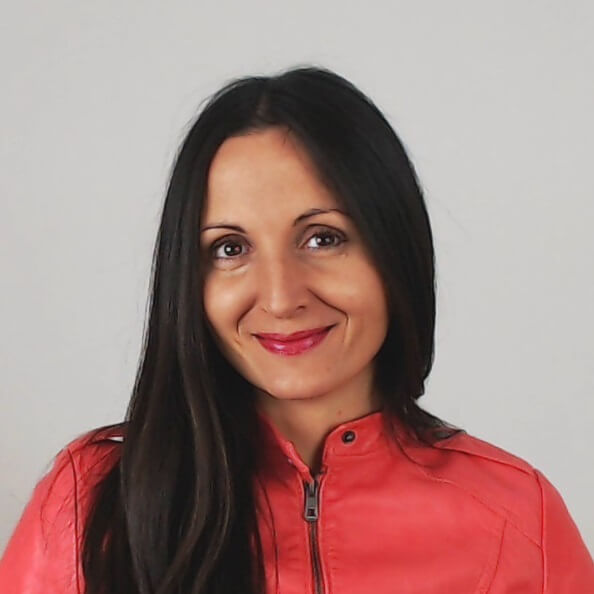Serbian C Ć Č Sounds Pronunciation: The Best Explanation
The trickiest Serbian sounds to pronounce! Even the Serbian children struggle with them! In this post you will learn how to properly articulate the Serbian C Ć Č sounds and learn a few funny tongue twisters.
The Serbian C Ć Č sounds are among the most commonly confused letters and sounds. In this article post you will learn how to differentiate them and how to pronounce them correctly. Also, you will learn how to pronounce “ćevapčići” and a couple of funny tongue twisters.
To learn all the Serbian sounds and letters, enroll in the FREE introductory Serbian course at Serbonika.
/Transcript of the video/
Hello and welcome to the Natural Serbian course! Ja sam Magdalena and today I will teach you how pronouncing the Serbian C Ć Č sounds is actually easy.
By the end of this video you will be able to pronounce „ćevapčići“ and hopefully with some practice „Četiri čavčića na čunčiću čučeći cijuču“. (Good luck with that!)
Learn how to pronounce the Serbian C Ć Č sounds: they are not the same!
I know that a lot of you are wondering what is with all the C’s with the signs (some of you call them „accents“) above it. Well, first of all, these are not accents. These are called diacritical signs.
If you compare Latin (C Č Ć) with the Cyrillic letters (Ц Ч Ћ) you will see that these are completely different letters and completely different sounds to our ears.
Serbian C is the “pizza sound”
Let’s first make sure that you know the C sound. This is the „pizza“ sound. It’s never a „k“ sound, this letter K is for the „k“ sound.
And there is a serious reason why we in Serbia tend to write the Italian word pizza italian way – even though we spell everything Serbian, like „ćao“ (ciao). We spell pizza the Italian way because if we spell it the Serbian way, that’s the word we use for female genitals. One of the words for that.
So make sure to spell pizza the Italian way, and that this little letter „C“ is used for the pizza sound.
Serbian C with V above: Č
What happens if we put V above this letter? That’s how we get the „č“ sound – the same sound that you have in English: Chuck, Charlie, Chick Corea. We say Čikago, even though you say Chicago, you use a different sound for it in English. The English sound is very very similar. How we produce this sound? What we do with our lips and teeth and tongue more than anything else?
What we do is that we put the tip of our tongue behind our upper teeth, on the small part of palate right behind your upper front teeth. It’s very similar to the position of your tongue when you say T.
Let’s try: tak – čak.
Now, that was easy. You know this sound because you have it in your repertoire of sounds.
J, the yo-yo sound
Now, I’ll have to add another sound. Do you know in English, when you say „yo“? Like „yo-yo“ (jo-jo), you know the little toy for children. Yo-yo is the sound that we need. It’s the „j“ sound. It’s a very important sound that has influenced many sounds in the Serbian language. Today I’m going to explain only one of these, but make sure to remember this J sound.
J is actually a little „i“. It’s very close to the vowel „i“.
Serbian C with a slash above: Ć, a typically Serbian sound
Now, this very position of the tongue is the one that we need to produce Ć, this specifically Serbian sound ć. So, what happens?
The tip of your tongue is actually behind your lower front teeth, and the middle part of your tongue is up and almost stuck to your palate. The air is flowing between your tongue and palate.
But the tip of your tongue, that’s the key, is behind your lower front teeth.
Practice time!
You can start by practicing T – J. Or even better, L – J.
When saying L or T, our tongue touches the palate right before our upper front teeth, and when we say J our tongue is behind our lower front teeth.
The very same thing happens with Č and Ć.
Can you do that now?
All right? I think we’re there somewhere. If you need, stop the video for a moment and practice a little bit by yourself: č ć, č ć
And then come back, and start saying: ćevapčići.
And now I want you to practice saying this tongue twister: „Četiri čavčića na čunčiću čučeći cijuču.“
These are the weird Serbian C Ć Č sounds and letters that freak you all out before you learn them and actually know them. Now you can see it’s very easy to pronounce the Serbian C sounds!
Now I dare you to make a video of your own saying the tongue twister!
Sometimes the Serbian C Ć Č sounds are tricky even for the Serbs! Especially for the children. That’s why we have the tongue twisters in the first place, to teach children how to pronounce these funny sounds.
“Čokanjčićem ću te, čokanjčićem ćeš me!”
One final tip about pronouncing the Serbian C Ć Č sounds
I hope that you’ve had fun and learned how to pronounce the Serbian C Ć Č sounds. Now I have a confession to make: make sure to distinguish C from Č and Ć. And the last two you can pronounce the same way you pronounce English or Spanish ch. Nobody will misunderstand you.
There’s a very small number of word pairs where this distinction in the sounds actually can make a difference in the meaning.
The truth is that many people from Croatia and Bosnia actually pronounce these two sounds (Č and Ć) exactly the same way, some even confuse them in writing.
There, I’ve said it.
Now if you’re learning to pronounce Serbian, focus more on getting right the vowel sounds. They can sure cause many misunderstandings. And to learn all the Serbian sounds and letters, enroll in the FREE introductory Serbian course at Serbonika.
by Magdalena Petrovic Jelic
Founder of Serbonika
Serbian language teacher and entrepreneur, language lover and polyglot, but also a mother and a relentless storyteller. Read more about me.
My mission is to create the best method for learning Serbian. Would you like to learn Serbian with my lessons? Try free.
#Serbian pronunciation
Serbonika
Najbolja metoda za učenje srpskog jezika
The best method to learn Serbian
The sooner you start learning, the sooner you’ll start talking. Take action now!
Vowels in Serbian: Phonetics and Pronunciation
In Serbian language there are only 5 vowels. That’s less then in English, French or German. Learn how to pronounce Serbian vowels properly.
Greeks and Serbs: What We Have in Common
How do you answer to “Dobro došli”? If you say only “hvala”, you were taught WRONG! Discover several traditional figures of speech that will make you sound like a native, and that Serbs and Greeks have in common


